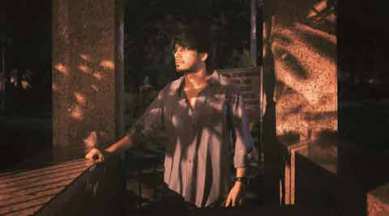Click here to follow Screen Digital on YouTube and stay updated with the latest from the world of cinema.

Every night, after a long day at work, Sanjay spends time with his two children, telling them bedtime stories. Before getting into bed, Sanjay applies a layer of mosquito repellent cream on their bodies and puts a thin quilt over them.
The setting is perfect for a bedtime tale of the tortoise and the hare — it’s dark, the air is cool, and the children are eager to travel to a land of fantasy.
But it’s not quiet. There’s constant noise from a movie playing metres away. There’s also the relentless noise of horns from speeding cars. It’s coming from right above them. Sanjay and his children — a boy and a girl — are one of the many who sleep under the Yamuna Railway bridge, commonly known as Loha Pul in Delhi. Between a lively city and a lonely river, sleep the homeless.
***
Sanjay is not the protagonist of Delhi-based Shaunak Sen’s debut documentary titled Cities of Sleep. His is a parallel story, one filled with innocence and love, a breather from the darkness that Sen explores. Cities of Sleep is about a migrant, Shakeel — his eyes empty, feet swollen and pocket full of lies — and how his life revolves around finding a corner to sleep for a few hours every night. The 70-minute film is also about Jamaal bhai who lends cots and quilts to the homeless who stop by his tea stall in Meena Bazaar in old Delhi at night — and how he heartlessly shoos away those who have no money. The film is about Ali Abbas, who sits trembling and muttering in a puddle of slush and his own piss, waiting for someone to rescue him. It’s about the dog who gets kicked out of a children’s night shelter on a cold Delhi winter night.
“I wanted to explore the socio-political pressure that sleep exerts on cities. Just a good night’s sleep is a matter of life and death, and the lengths people go to for that,” says Sen, 28, a former journalist, who is now finishing his PhD in cinema studies from Jawaharlal Nehru University, New Delhi.
The film, produced by Films Division of India, will see its India premiere in Mumbai at the end of this month and will then travel across cities and festivals. Soon, Sen will begin work on the second part of his documentary on similar make-shift set-ups for homeless women in the city.
While most narratives end at the night shelters in the city, Sen’s movie begins from outside them. “I started visiting these shelters two-and-a-half years ago and was nudged towards other sleep arrangements. The city requires these informal infrastructures and the shelters can’t possibly provide for everyone,” says Sen. He began visiting Meena Bazaar without the intrusive gaze of the camera first, spending days drinking chai with Jamaal bhai. He met people he struck a connection with and some who remained hostile. “The first time I took the camera there, I shot a bit, and showed the footage to Jamaal bhai. Then I handed the camera to him, and asked him to shoot. Trust was important,” says Sen.
It was in Meena Bazaar that Sen and his crew met Shakeel. From pretending to be a handicapped beggar to disappearing for weeks at length, leaving Sen’s team in a flux, Shakeel is possibly the darkest character in Cities of Sleep, as well as a victim of circumstances. Had Shakeel not disappeared enough times, Cities of Sleep would have been an entirely different narrative. It was his absence that made Sen look for more informal sleep infrastructures, and he finally stumbled upon Loha Pul. It’s where Bollywood meets broken dreams; and where “cinema jaa rahe hain” mostly means “going off to sleep”. Under the bridge, a shanty welcomes its regulars to a make-shift cinema hall. For a mere Rs 10, one can watch three movies — popular ones starring Sanjay Dutt, Salman Khan or Jackie Shroff — on a TV set. Ranjit, a former rickshaw-puller, came up with this idea a few years ago. “Yaha aap rickshawwaale nahi ho; aap jo banna chahte ho aap woh ho (You can be whatever you want to be here),” says Ranjit in the documentary, as he talks about his love for films.
While the extractive violence and the mafioso feel of Meena Bazaar is one end of the spectrum, Sen trains his lens on community building in Loha Pul. “There’s a banking system in place here. When someone from the community falls sick, that money is used to get them treated. Similarly, they recently got a water pump,” he says. Apart from the stunning cinematography, what holds the film together is Ranjit’s narrative. He weaves in his personal story to comment on urban spaces, the city and the people who are on the fringes. “Yeh sheher neend par bata hua hai (This city is divided by sleep),” says Ranjit, in the opening montage of the film. It sums up the life of the homeless in India’s capital.
Click here to follow Screen Digital on YouTube and stay updated with the latest from the world of cinema.